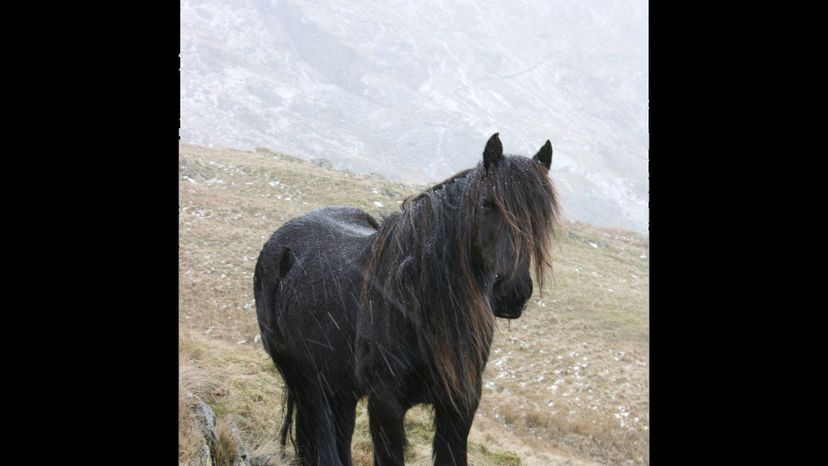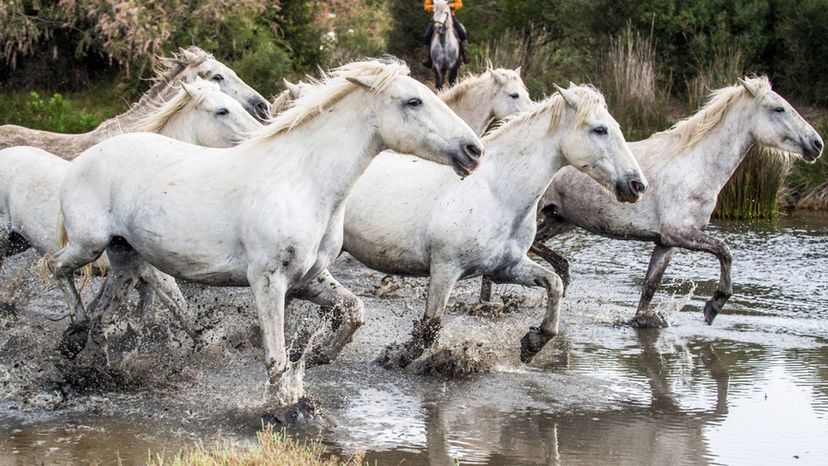
Image: Shutterstock
About This Quiz
From Appaloosas to Westphalians, this quiz tests your equine knowledge across the full spectrum of horse breeds. Play on to find out if you're an expert or an amateur.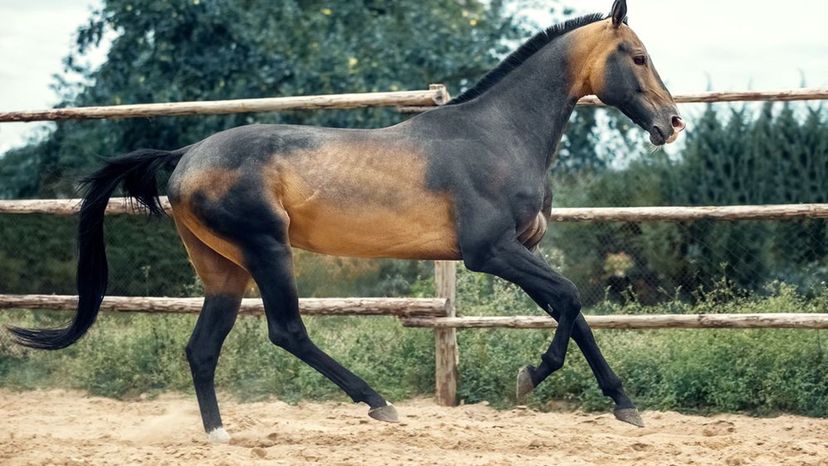
shutterstock
Which horse breed is shown here?
Pony
Akhal-Teke
The history of the Akhal-Teke horse breed can be traced back 3,000 years, with origins in the middle east. Akhal-Teke horses didn't make it to American soil until 1979, when they were imported by a married couple based out of Shenendoah Farms, Virginia.
Gold star
Newfoundland
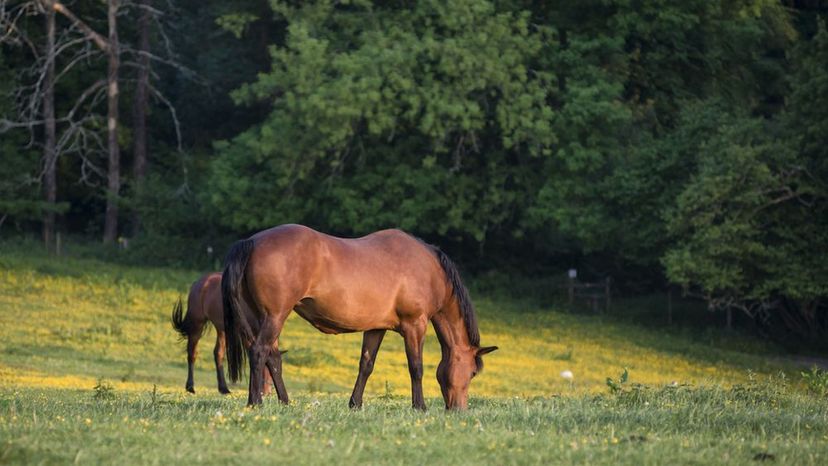
shutterstock
Which horse breed is shown here?
Gale
Rover
Cleveland Bay
The Cleveland Bay is considered England's oldest native horse breed, with origins in Northern Yorkshire. With few exceptions, this breed is bay in color with a black tail, mane, and legs. Rarely, some horses may be born chestnut in color rather than bay.
Pony
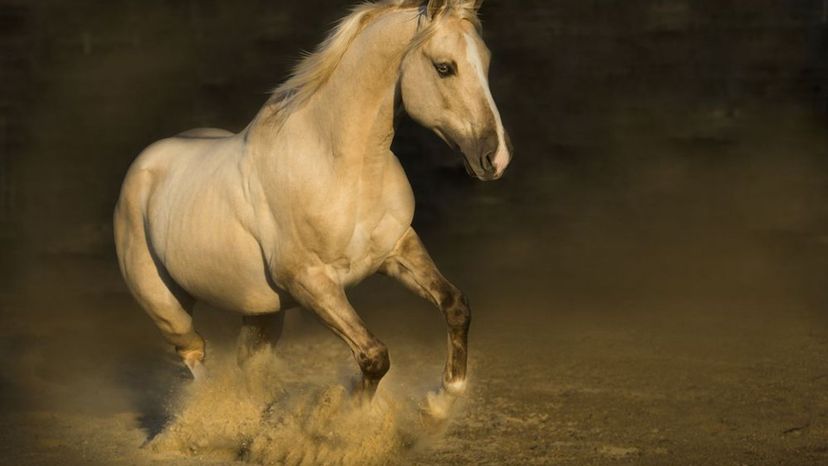
Shutterstock
Which horse breed is shown here?
American Quarter Horse
The most popular American breed, this horse's genetics come from colonial America, when settlers decided to cross English horses with Spanish ones. The result was the American Quarter Horse, a strong, compact horse capable of outrunning almost any other over short distances.
Clydesdale
Hannah
Chicago
Advertisement

YouTube
Which horse breed is shown here?
Moab
Drummer
Stallion
Newfoundland Pony
The Newfoundland Pony is most commonly found in the United States and Canada, but the species is critically endangered. Due to a variety of (human created) reasons in the 20th century, this horse breed faced endangering population declines, resulting in Newfoundland establishing a ban on exporting the horse without a permit.
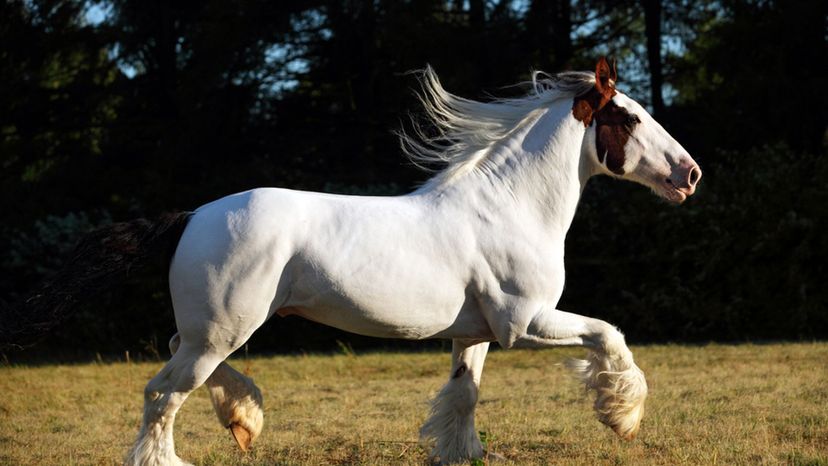
Shutterstock
Which horse breed is shown here?
Shire
Mustang
Drum Horse
The Drum Horse breed has specific requirements that specify a horse cannot be any less than 12.5 percent Gypsy or more than 50 percent Gypsy. It's considered a versatile breed across all disciples and originated in Great Britain.
Morgan
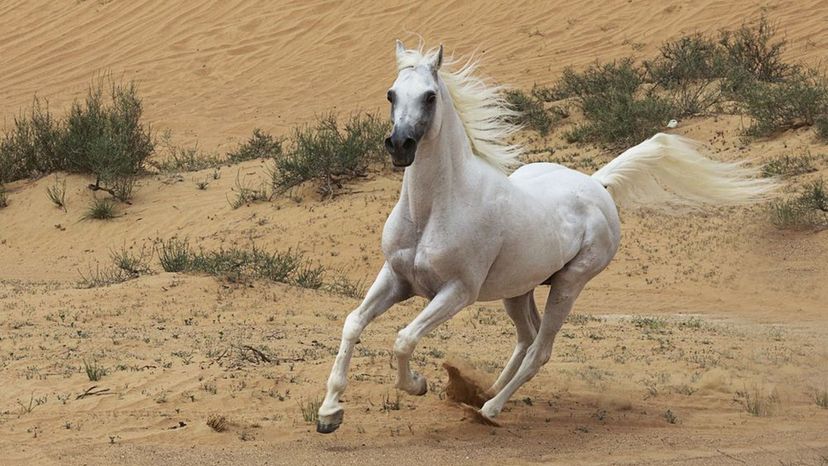
Shutterstock
Which horse breed is shown here?
Arabian
The Arabian breed is considered to be the oldest living breed and has influenced the genetics of most breeds in existence today. Out of all the countries in the world, the United States has the highest population of Arabian horses, where they are bred for their endurance and athleticism.
Marsh
Paint
Shire
Advertisement
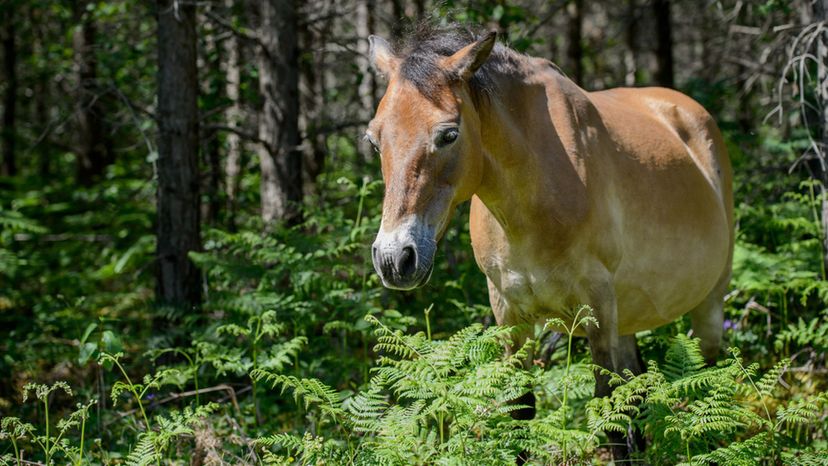
Shutterstock
Which horse breed is shown here?
Gotland-Russ Pony
This horse breed is native to Gotland Island of Sweden, where it thrives in forest regions. During WW II, food resources were often scarce, and the Gotland-Russ Pony was hunted, causing populations to decline. It is a relatively new breed in the United States and doesn't have much of an established presence.
Miniature horse
Black maned
Brown-bellied
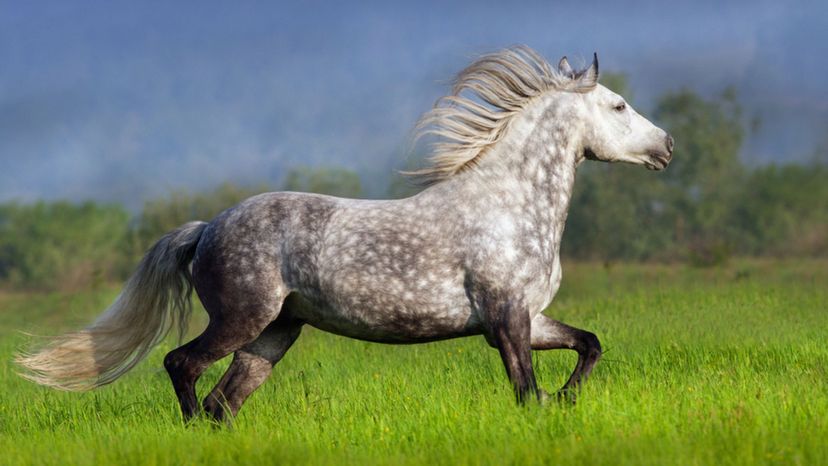
Shutterstock
Which horse breed is shown here?
Bay
Mare
Andalusian
Originally hailing from the Iberian Peninsula, the Andalusian breed's genetics can be found at the base of many other modern breeds, like the Lippizzaner and Peruvian Paso. It's considered an "ancient" breed, with roots potentially dating as far back as 20,000 years ago.
Drum
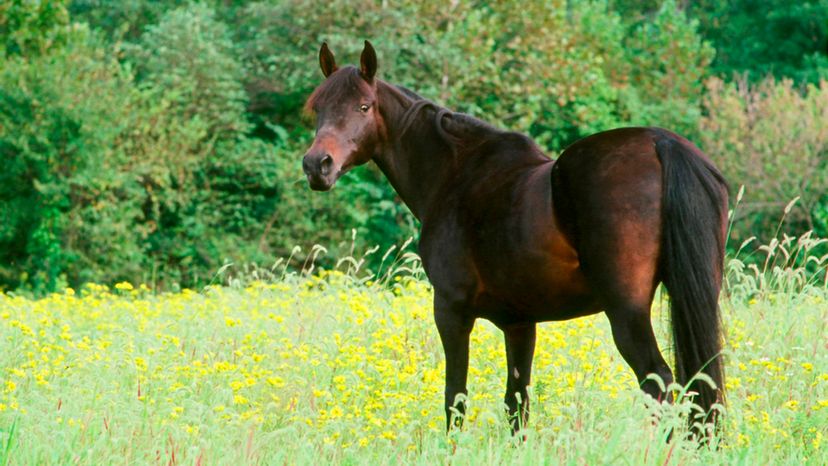
shutterstock
Which horse breed is shown here?
Caspian
Arabian
Freeman
Morgan
Not too long after the birth of the United States of America in 1776, came the birth of the Morgan breed in 1789 with the arrival of a young stallion in Massachusetts named Figure who could beat any other horse in all types of different races. The exact lineage of the breed is unknown, but it is believed to be a cross of Arabian, Thoroughbred, and Dutch Friesian.
Advertisement
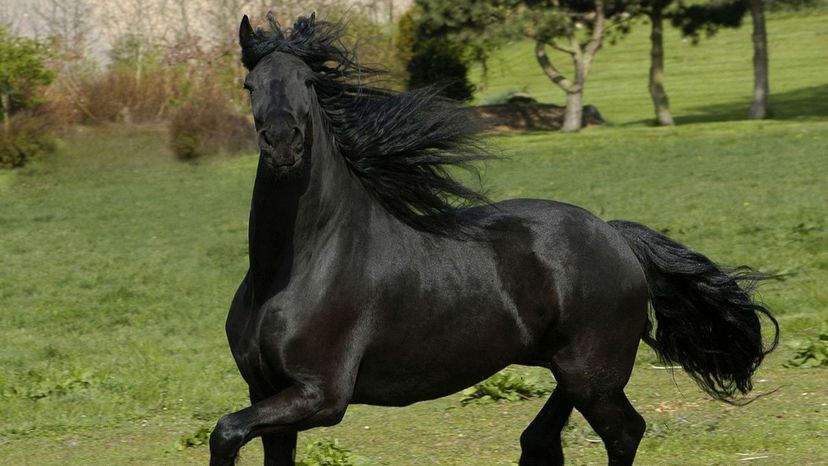
Shutterstock
Which horse breed is shown here?
Friesian
World War II saw devastating declines in the populations of major horse breeds across the globe due to use in battle as well as over-hunting. Horses were viewed as a food source in times of scarcity. The opposite was true for the Friesian - the breed is considered one of the best carriage horses and was heavily relied upon during the war by the Dutch, who were experiencing fuel shortages, for fieldwork and transportation.
Cleveland Bay
Spanish Mustang
American Hero

Youtube
Which horse breed is shown here?
Pony of the Americas (POA)
The first ever Pony of the Americas (POA) was named "Black Hand" after a black spot on his flank that looked like a hand. POAs are meant for small, child riders and must be between 46 and 56 inches.
Arabian
Connemara Pony
Florida Cracker

shutterstock
Which horse breed is shown here?
Norman Cob
Paso Fino
Marsh Tacky
Lusitano
In Portuguese bullfighting, the Lusitano is used to navigate around charging bulls. In this form of bullfighting, the bull is not killed. The average Lusitano grows between 15 to 15.3 hands.
Advertisement
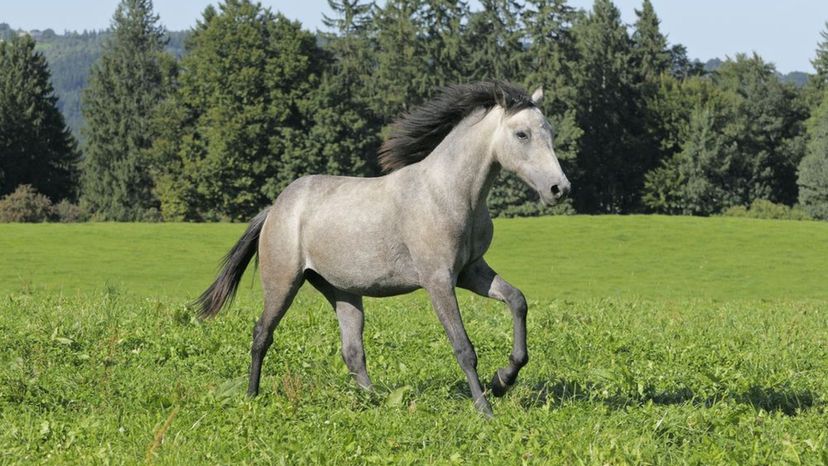
shutterstock
Which horse breed is shown here?
Clydesdale
Connemara Pony
The only breed native to Ireland, the Connemara Pony averages 13 to 15 hands and is considered the ultimate sport pony. The breed is best known for its superior jumping abilities.
Barb
Shire
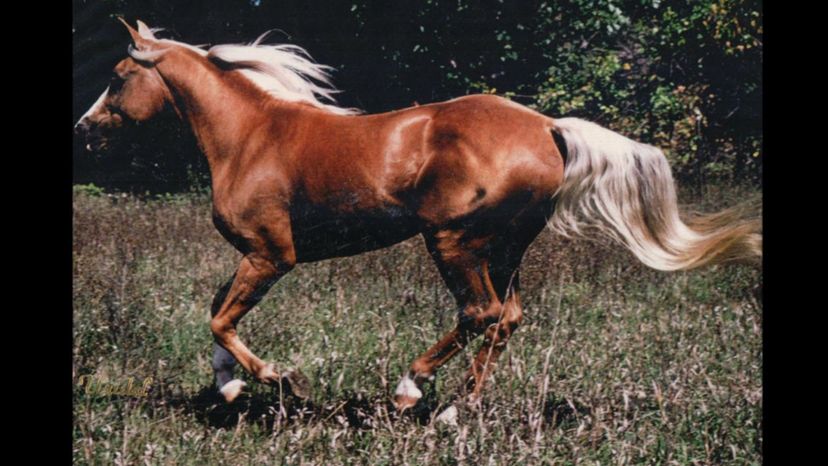
YouTube
Which horse breed is shown here?
St. Charles
Morab
Famous publisher William Randolph Hearst came up with the name for this horse breed. The Morab is known for its intelligence and social nature.
Clydesdale
Exmoor
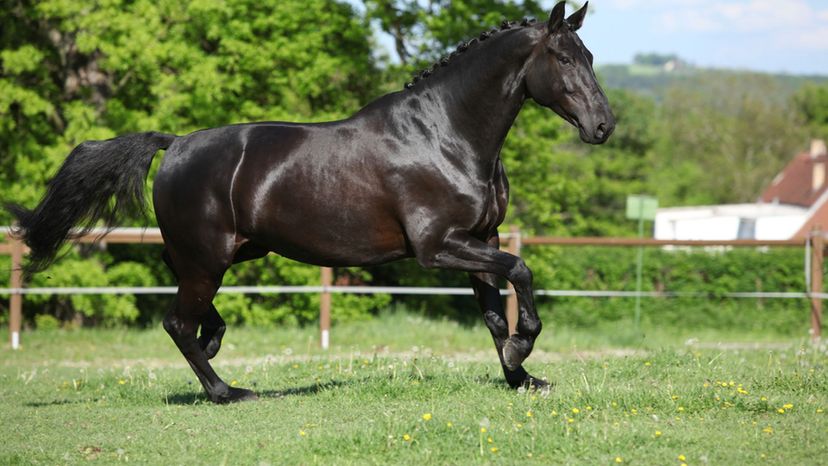
shutterstock
Which horse breed is shown here?
Dutch Warmblood
This breed is also known as a Dutch riding horse and grows between 16 and 17 hands. The Dutch Warmblood is used in dressage and show jumping.
Hackney
Marwari
Mule
Advertisement
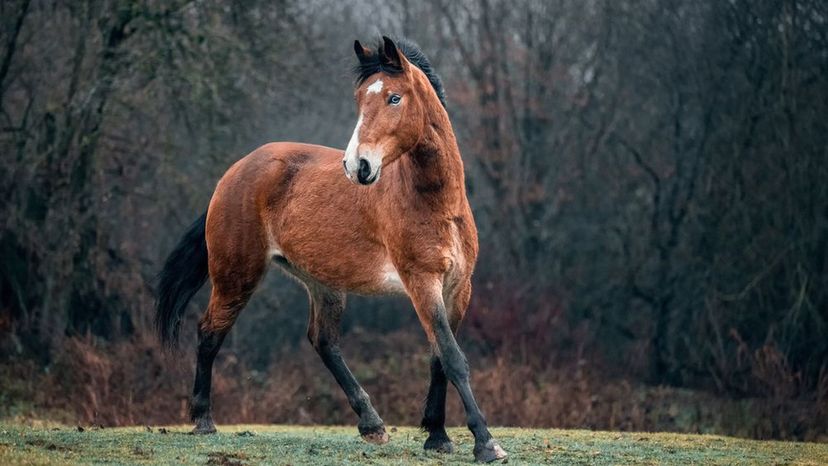
Shutterstock
Which horse breed is shown here?
Fell Pony
Oldenburg
Shire
Spanish Mustang
Spanish Mustangs are those horses that are direct descendants of the horses Spaniards brought to the "New World" in colonial times. The breed developed as a result of directed conservation efforts of Spanish breeds after the horses faced near extinction towards the start of the 20th century.
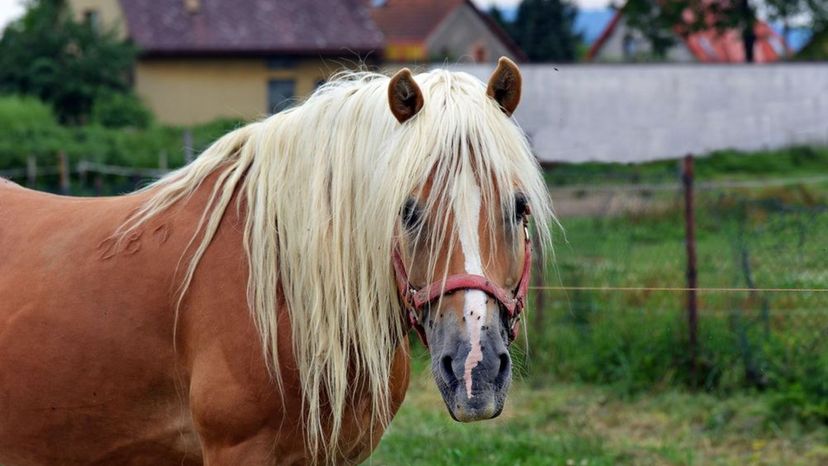
shutterstock
Which horse breed is shown here?
Haflinger
The Haflinger breed is also called the Avelignese and is native to the mountains of Austria with roots dating back to the middle ages. Horses of this breed are always chestnut in color, ranging from light to dark.
Pinto
Ranger
Saddlebred
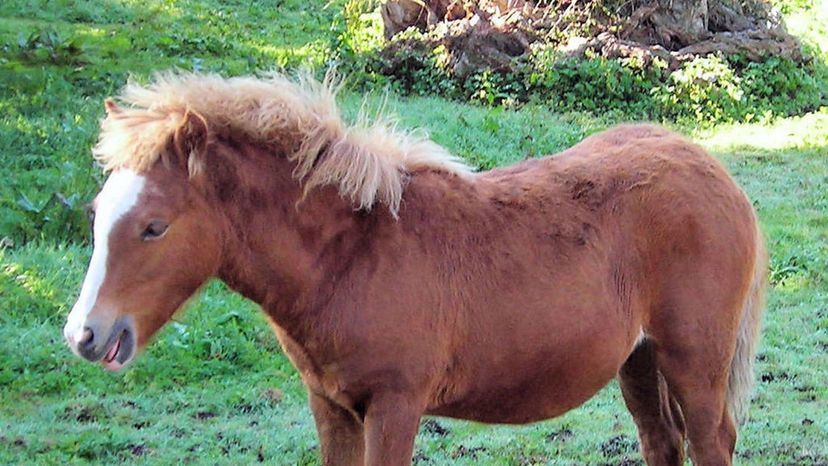
Wiki commons
Which horse breed is shown here?
Curly Horse
Caspian
Kerry Bog Pony
Peat, or turf, is partially decomposed organic material found in natural environments. This particular horse breed was named for its work hauling peat from the bogs of Kerry, Ireland. The peat was burned as a fuel source.
Morgan
Advertisement
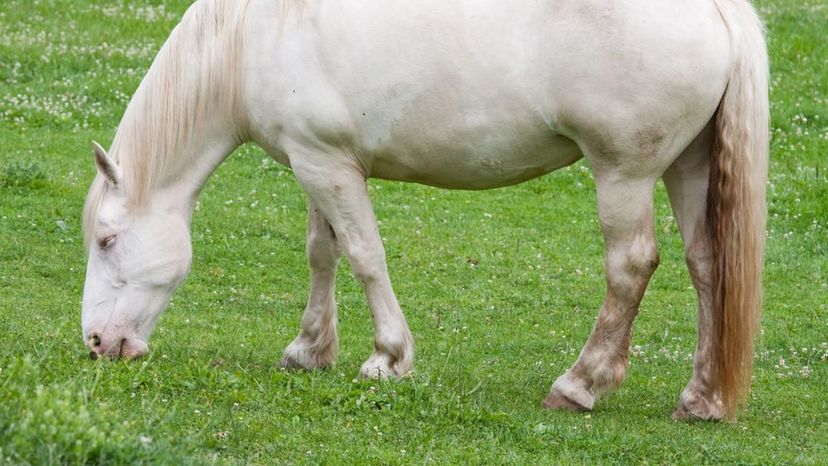
Shutterstock
Which horse breed is shown here?
Drum Horse
American Cream Draft Horse
The blood of a mare named Old Granny runs through the veins of approximately 98 percent of all living American Cream Draft Horses. These horses are mainly kept for hobby and logging, but some people do ride them.
Budenny
Dales Pony
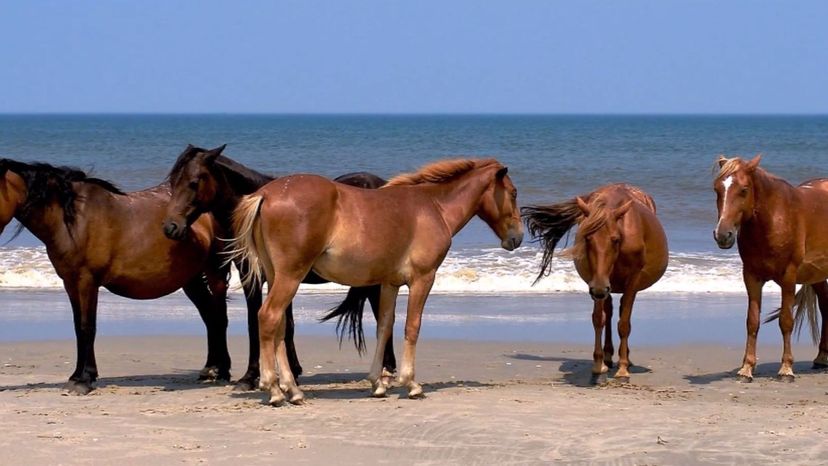
Youtube
Which horse breed is shown here?
Marwari
Marsh Tacky
If you're ever looking to go trail riding in the lowland bogs of South Carolina, odds are you'll end up riding a Marsh Tacky. Because of this horse breed's impressive endurance and ability to navigate tough terrain, the Marsh Tacky was heavily relied upon for many aspects of living and farming during colonial times.
Quarter Horse
Ranger
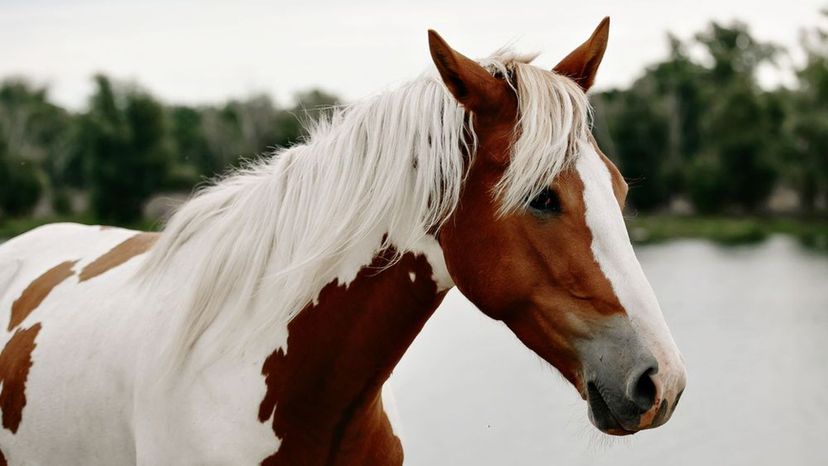
shutterstock
Which horse breed is shown here?
Pinto
The Pinto is a color breed, which means parental lineage and bloodlines aren't a requirement of the breed. The Pinto is distinguished by its spotted coat.
Mayflower
Racking Horse
Shire
Advertisement
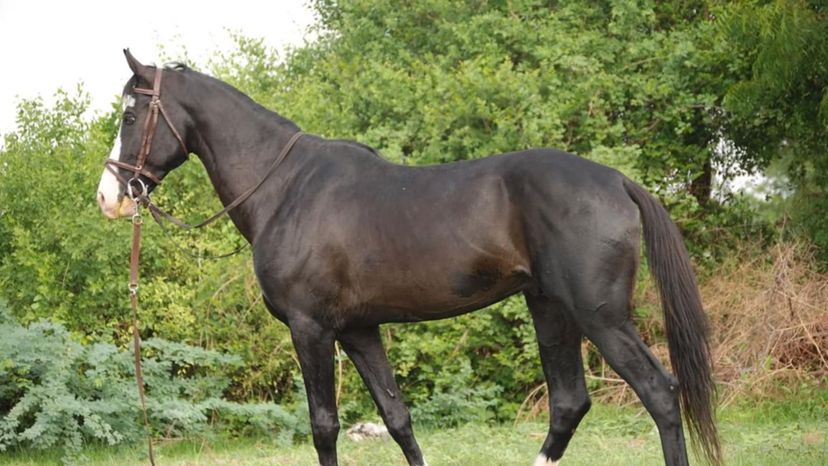
YouTube
Which horse breed is shown here?
Nokota
Mule
Kathiawari
This breed is native to the Kathiawar peninsula in Western India and is believed to be a hybrid of Arabian and other desert breeds. Although closely related to the Marwari breed, the Kathiawar is stockier with shorter, more tightly curled ears.
Paso Fino
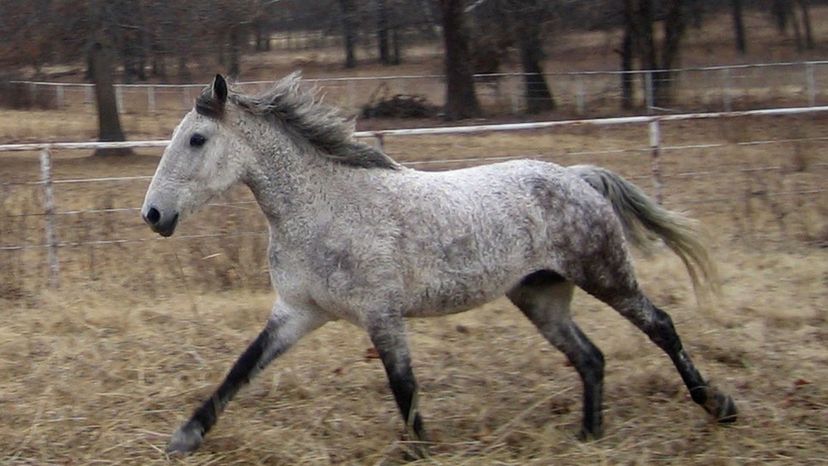
Wiki commons
Which horse breed is shown here?
Irish Draught Horse
Hanoverian
Dales Pony
Curly Horse
This breed is also known as the American Bashkir Curly Horse and is the result of breeding by three horses found in the Nevada desert in 1898. How the three horses made it to North America remains unknown. Curly Horse hair is usually hypo-allergenic.
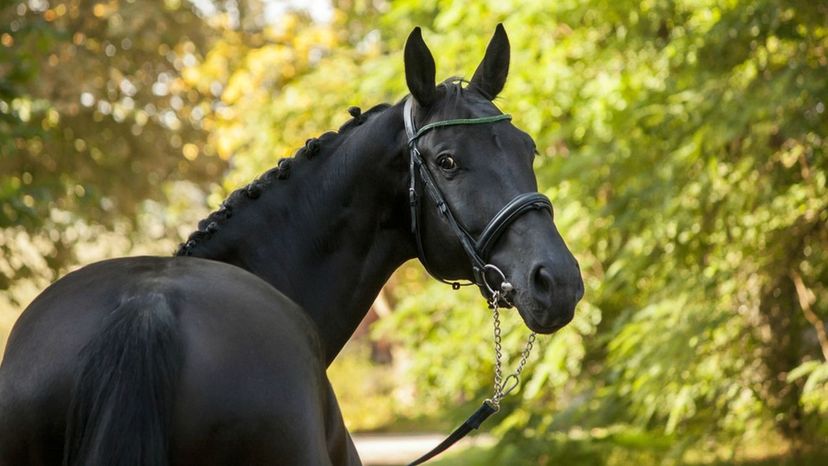
Shutterstock
Which horse breed is shown here?
Paint Horse
Thoroughbred
The Thoroughbred has a stride exceeding 20 feet long and can reach speeds upwards of 30 miles per hour. The breed has contributed to the development of many other breeds, including the American Quarter Horse and some European Warmbloods.
Morgan
Mule
Advertisement
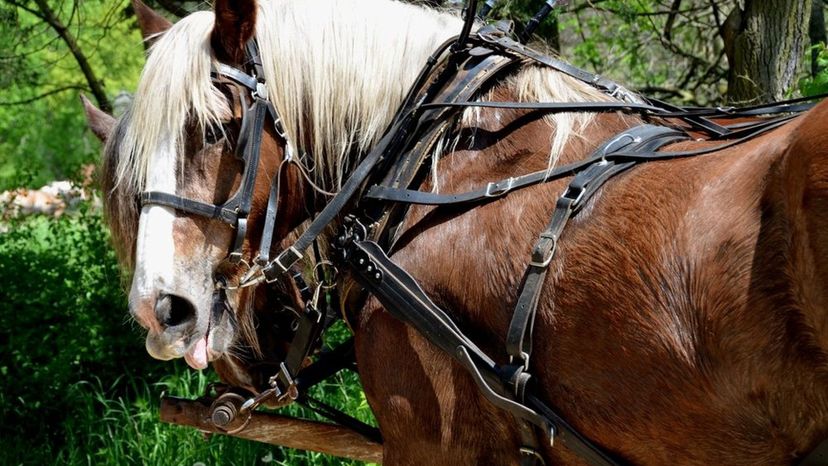
shutterstock
Which horse breed is shown here?
Morgan
Belgian
Belgian horses are distinguished by their sorrel color - which means they're a light chestnut color with a mane and tail that are lighter in color than the body. They usually have four lighter-colored "socks" as well.
Ranger
Mustang
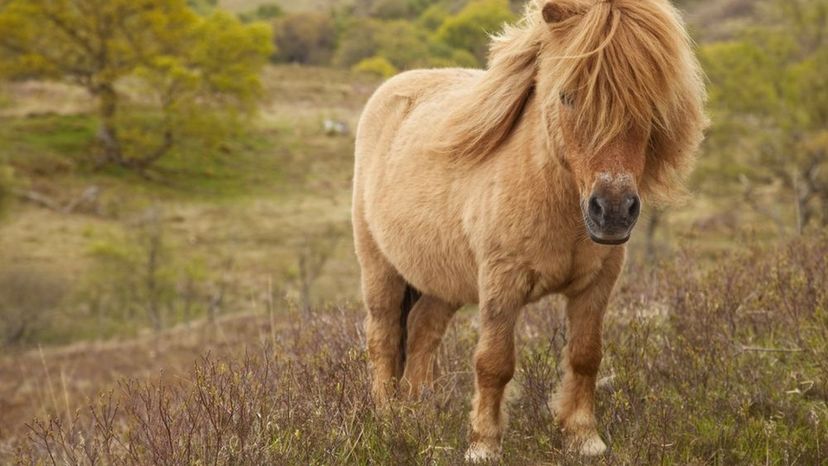
Shutterstock
Which horse breed is shown here?
Highland Pony
This particular pony is native to the north of Scotland and is one of only two breeds to originate from the area. This Highland is considered an "all-rounder" by Scottish farmers because of its natural talents in farming, hunting, and riding.
Hackney
Gypsy
Florida Cracker
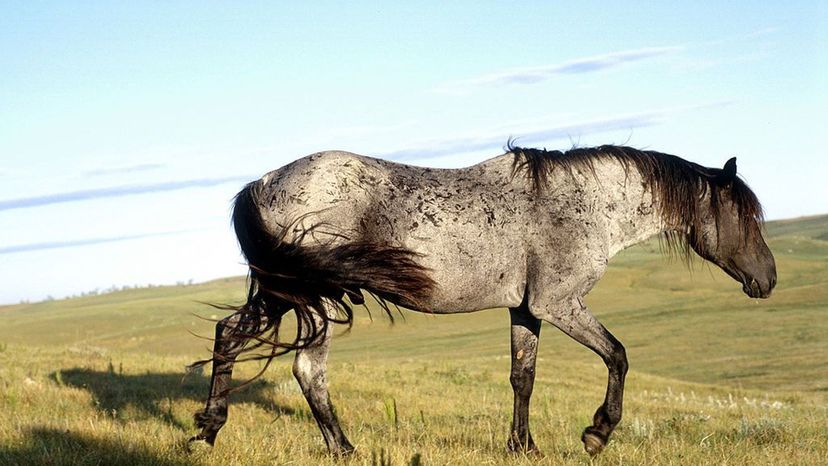
Wiki commons
Which horse breed is shown here?
Barb
Nokota
One of the few remaining descendants of the North Dakota wild horses, the Nokota breed is a reliable problem-solver. They're agile, athletic, hardy, and have amazing stamina, making them an excellent breed for use in a variety of riding circles.
Rocky Mountain Horse
Saddlebred
Advertisement
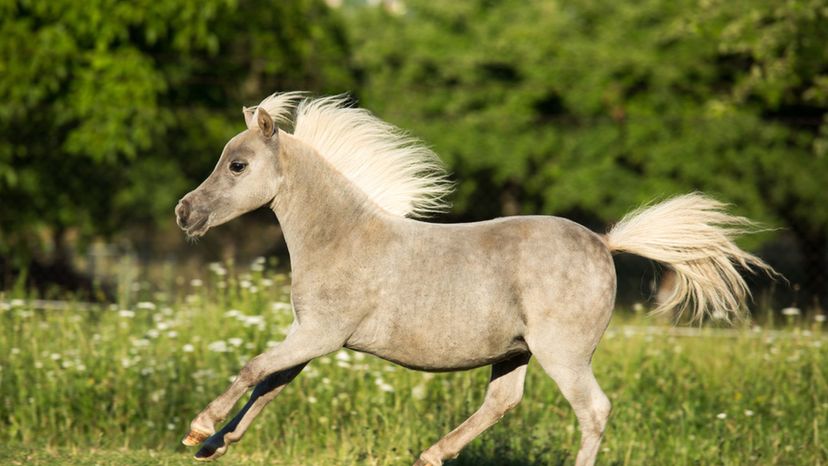
Shutterstock
Which horse breed is shown here?
Donkey
Mule
Miniature Horse
With roots dating back all the way to the 17th century, the miniature breed has a rich and interesting history. 17th century nobility/royalty were particularly interested in the abnormal and other oddities, like mini horses, and so they bred this horse as part of a talking-point trend.
Shire
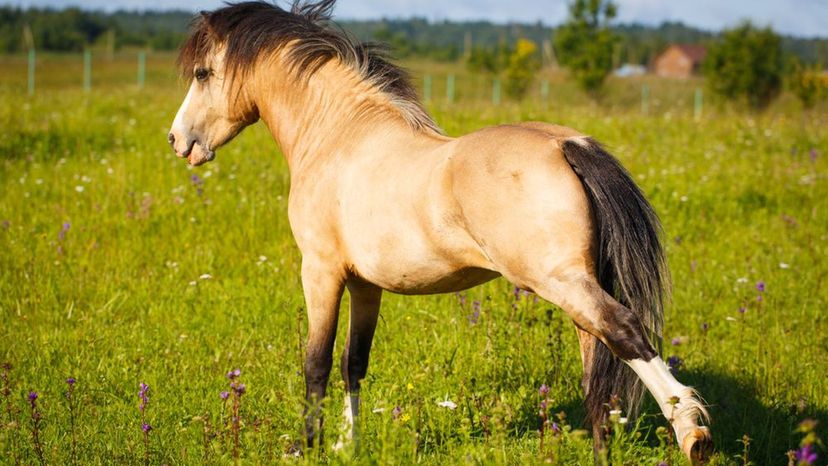
shutterstock
Which horse breed is shown here?
Welsh Pony and Cob
There are four different sections to the Welsh Pony and Cob, including: A, the Welsh Mountain Pony; B, the Welsh Pony; C, the Welsh Pony of Cob Type; and D, the Stocky Welsh Cob. This breed hails from the windy hills of Wales.
Quarter Horse
Norman Cob
Mountain Pleasure Horse
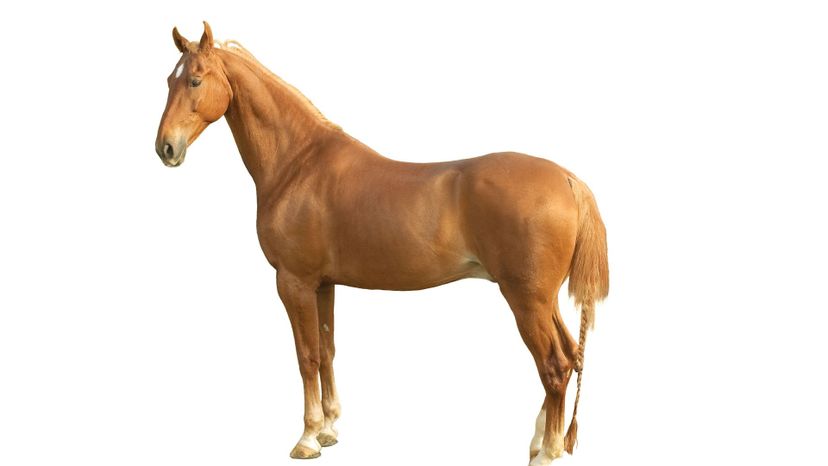
shutterstock
Which horse breed is shown here?
Mustang
Ranger
Bard
American Saddlebred
Believed to be the "ultimate show horse," the American Saddlebred comes in all colors, including pinto, and usually stands around 15 to 17 hands. It's considered an elegant horse, with a lineage of Arabian, Morgan, and "American Horse."
Advertisement
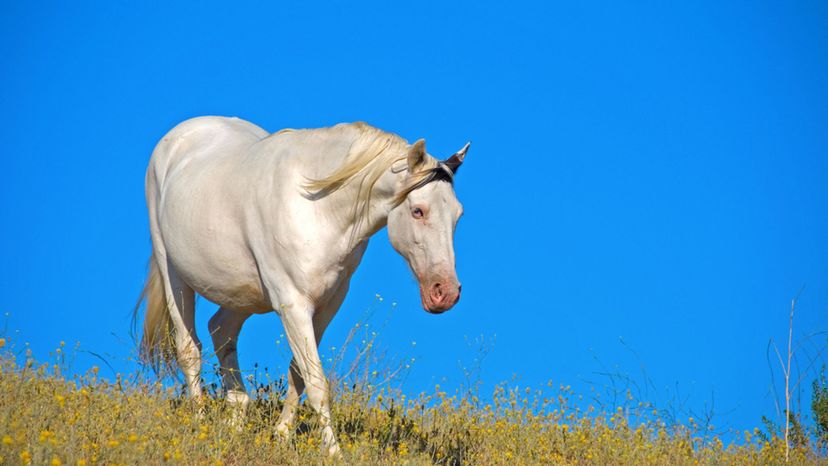
shutterstock
Which horse breed is shown here?
Racking Horse
Shire
Standardbred
Tennessee Walking Horse
This breed came about in the late 1800s as the result of crossing a mixture of lineages, including Morgans, Canadians Horses, and Narragansett Pacer. The Tennessee Walking Horse made it possible for people to ride horseback for hours with much less discomfort due to its smooth gait.
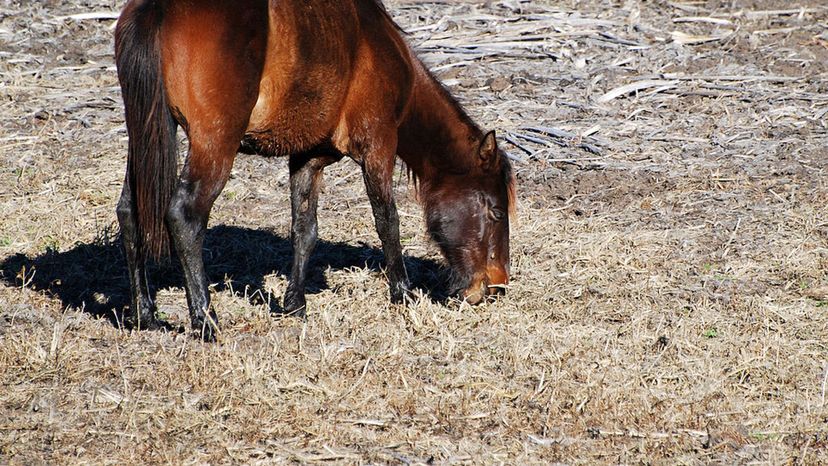
Wiki commons
Which horse breed is shown here?
Florida Cracker
This breed's name comes from its early cowboy riders, who were called "crackers" because of the cracking of their whips when herding cattle. The Florida Cracker was popular with ranchers until the 1930s when the American Quarter Horse came around.
Marsh Tacky
Ranger
Mustang
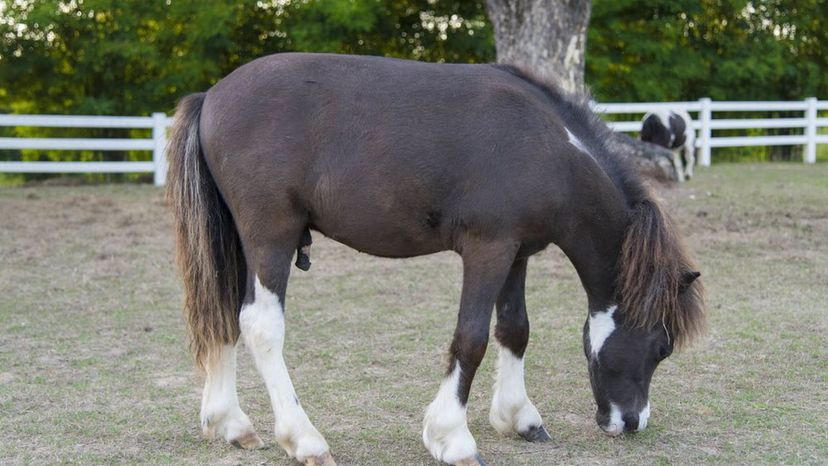
shutterstock
Which horse breed is shown here?
Canadian Horse
The French introduced Breton and Norman horses to upper North America in the late 1600s, resulting in the development of the modern Canadian Horse breed. Canadian breeds contributed to the development of many other breeds, including the Morgan, Standardbred, American Saddlebred, and Tennessee Walking Horse.
Curly Horse
Mustang
Fell Pony
Advertisement

Wiki commons
Which horse breed is shown here?
Orlov Trotter
When Count Alexei Orlov crossbred European Mares with Arabian Stallions in the 18th century, the result was the Orlov Trotter breed. The breed now faces near extinction with only 800 mares left across Russia and the Ukraine.
Paint Horse
Paso Fino
Swedish Warmblood
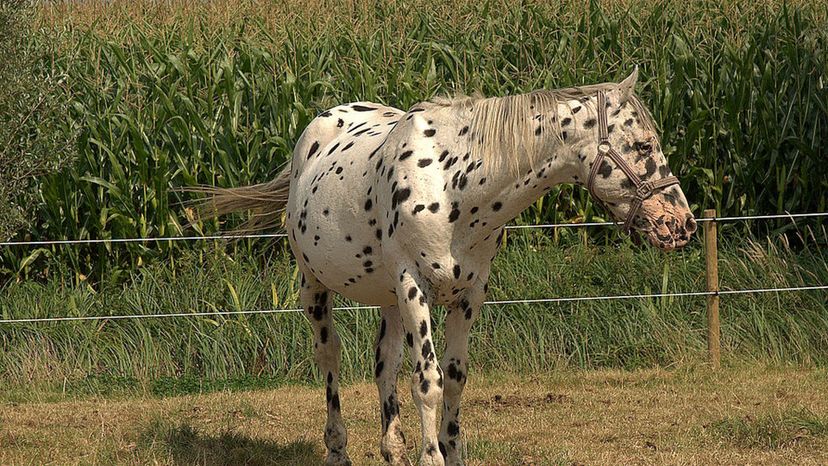
Wiki commons
Which horse breed is shown here?
Knabstrupper
This breed is native to Denmark and does well in dressage, jumping, and showing. It's known for its unique coat coloration, ranging from solid to leopard print.
Pinto
Morab
Morgan

Shutterstock
Which horse breed is shown here?
Nokota
P.O.A.
Clydesdale
This breed was found in a district of Scotland that was once called Clydesdale and is now known as Lanarkshire. It's a versatile breed, used in many disciplines, including work, dressage, and show.
Shetland Pony
Advertisement
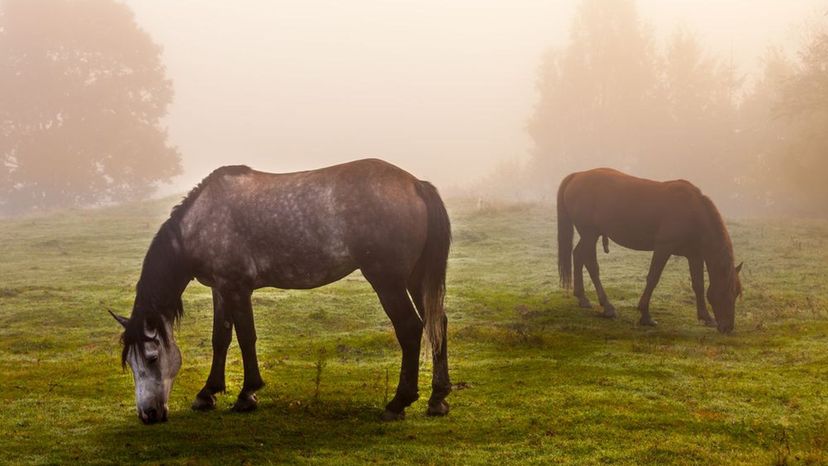
shutterstock
Which horse breed is shown here?
New Forest Pony
Rocky Mountain Horse
About half - or 10,000 - of the world's Rocky Mountain Horses (there's 20,000 total) live in Kentucky, which also happens to be where the breed originated. The horse is considered a "jack of all trades," able to be used in farm work, hauling, trail riding, and showing.
Westphalian
Paint Horse
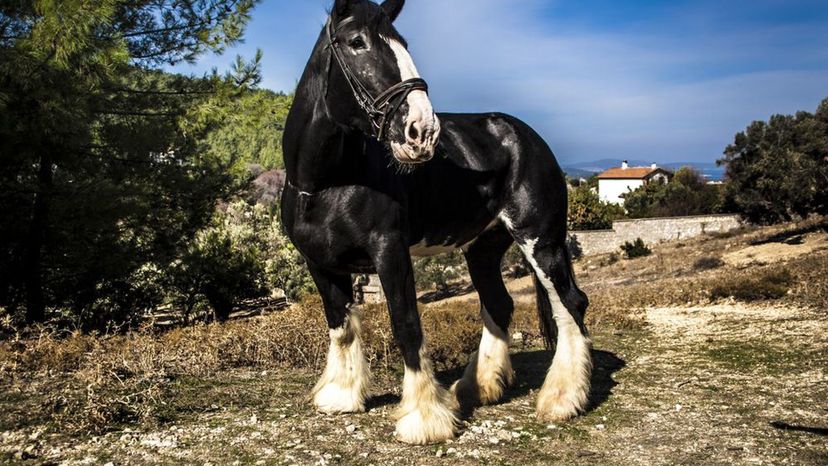
Shutterstock
Which horse breed is shown here?
Standardbred
Suffolk Punch
Swedish Warmblood
Shire
Because of its large size and muscular build, the Shire breed is not cut out for sporting disciplines, but they're great haulers. Shires are mainly used for work and leisure riding.
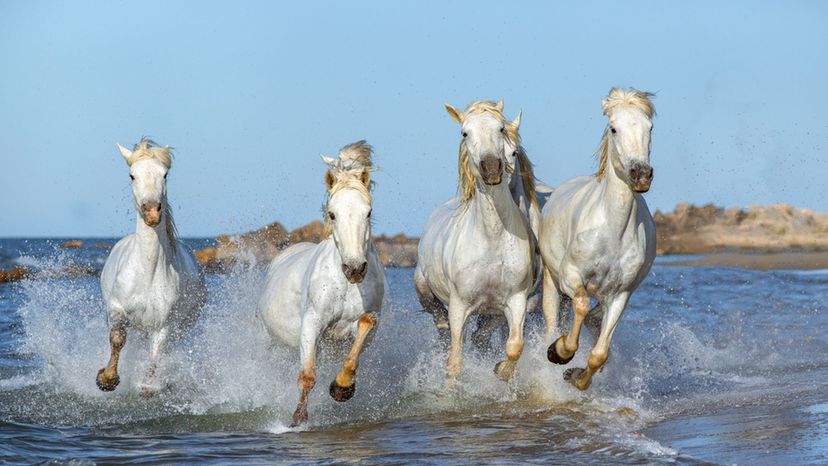
Shutterstock
Which horse breed is shown here?
Fell Pony
Camargue
With roots dating back to the prehistoric period, France has taken a proactive approach to conserving the ancient Camargue breed by creating the Camargue Regional Park. Some Camargues still run wild in southern France, while others are ridden by cowboys looking after wild bulls.
Racking Horse
Shetland Pony
Advertisement
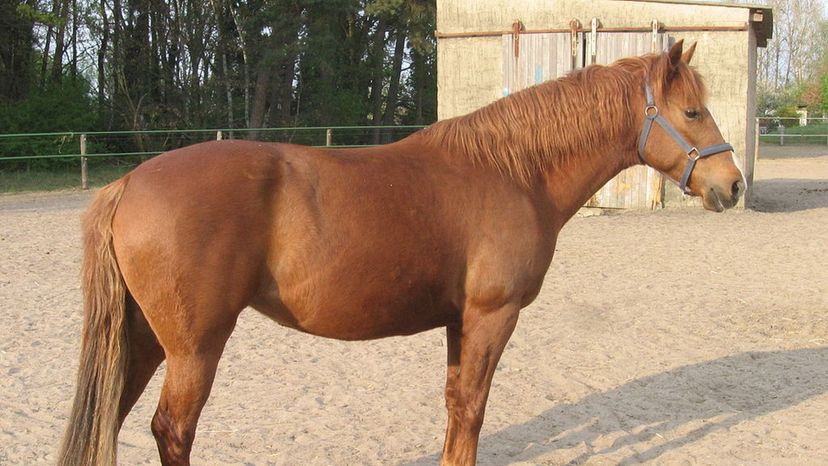
Wiki commons
Which horse breed is shown here?
Rocky Mountain Horse
Ranger
Selle Francais
Bard
The Bard is native to northern Africa and typically has one or two fewer rib bones than the average horse. This breed has influenced a number of modern breeds, including the Quarter Horse and Thoroughbred.
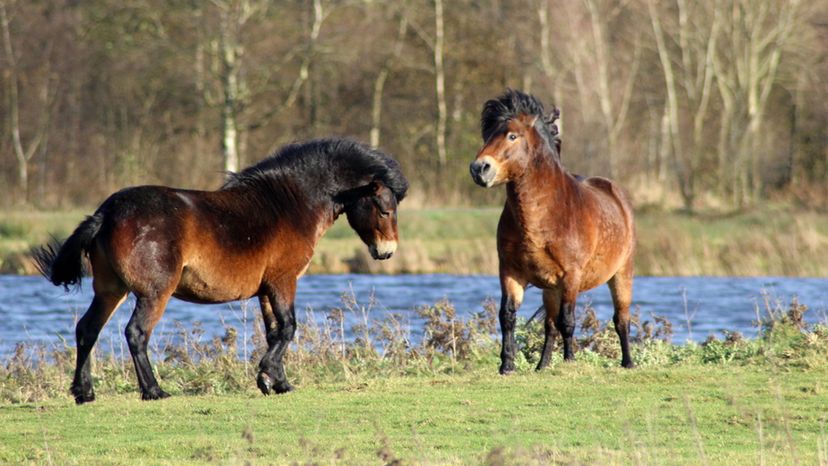
Shutterstock
Which horse breed is shown here?
Exmoor Pony
One of the oldest living British pony breeds, evidence of the Exmoor Pony dates back at least 60,000 years. This pony breed is able to carry both children and adults, and can withstand the harsh British climates.
Percheron
Ranger
Shetland Pony
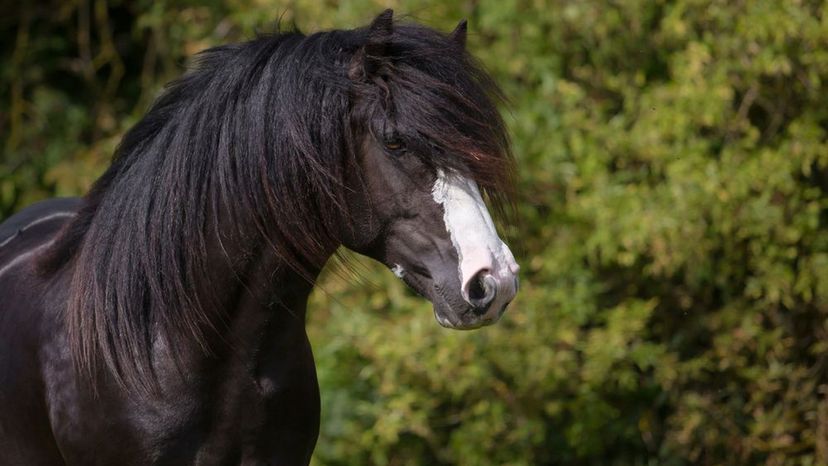
shutterstock
Which horse breed is shown here?
Curly Horse
Gypsy Vanner
The Gypsy Vanner was developed by British Gypsies intending to use the horses to pull their caravans. The breed was first introduced to the U.S. in 1999.
National Show Horse
Peruvian Horse
Advertisement
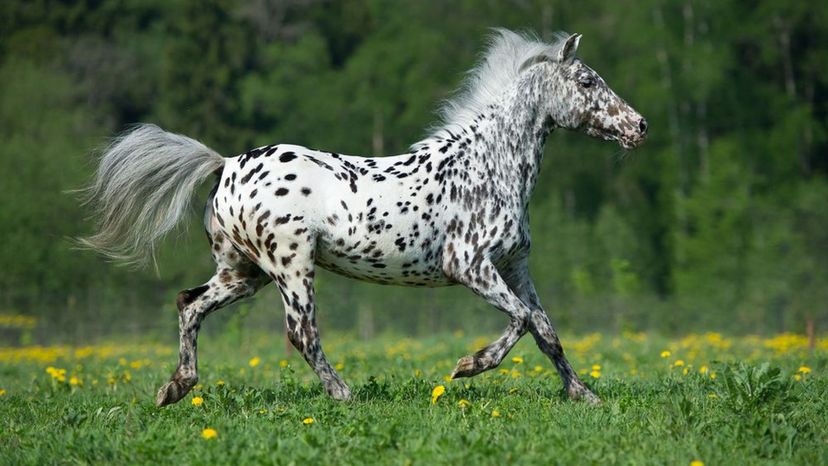
Shutterstock
Which horse breed is shown here?
Morab
Appaloosa
The Appaloosa breed is known for its easy-going temperament and is used in a variety of riding disciplines, including showing and farm work. The breed is also distinguished by striped hooves and spots.
Icelandic Horse
Lusitano
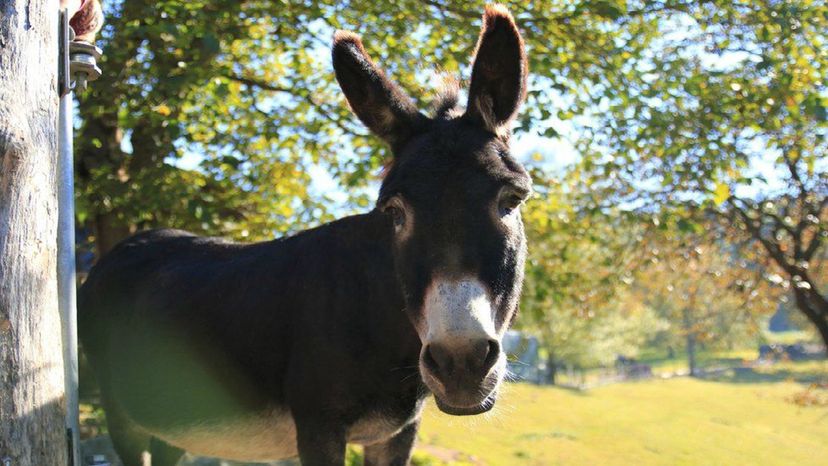
SHutterstock
Which horse breed is shown here?
Icelandic Horse
Dartmoor Pony
Mule
A mule is the result of a cross between a male donkey and a female horse. A hinny is the result of a cross between a female donkey and a male horse.
Arabian
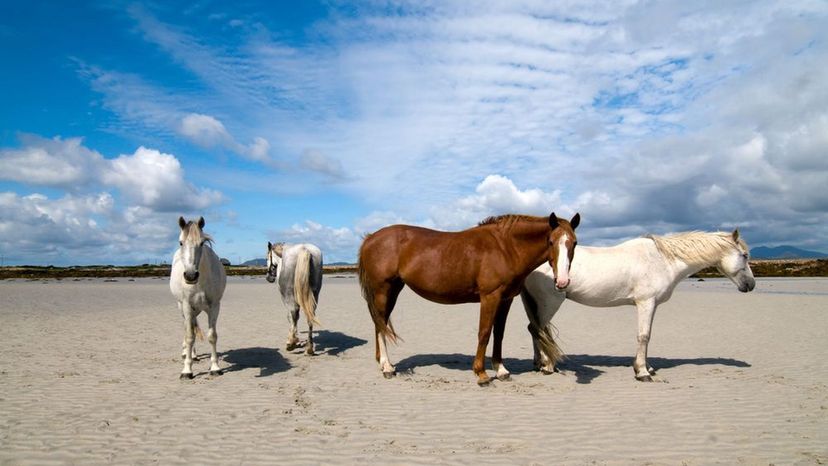
shutterstock
Which horse breed is shown here?
Irish Draught Horse
The national horse of Ireland, the Irish Draught Horse has traceable roots dating back to the 18th century. While they were once used primarily for work, the breed is now often crossed with Thoroughbreds and Warmbloods for use in sporting events.
Clydesdale
Mule
Curly Horse
Advertisement
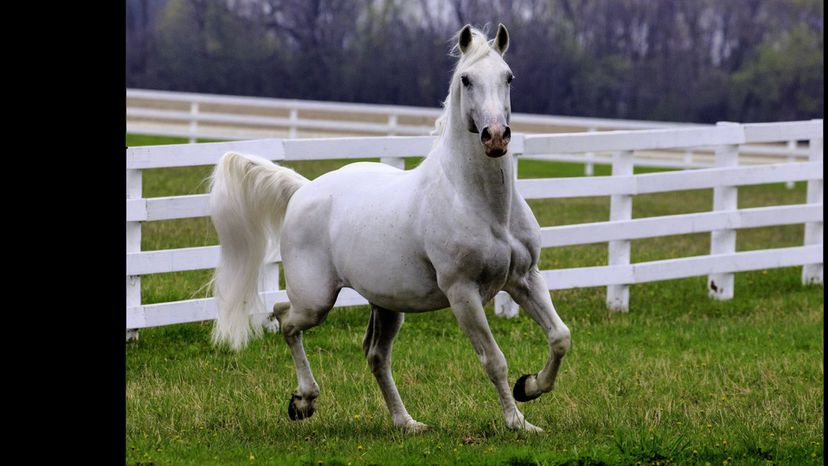
Shutterstock
Which horse breed is shown here?
Lipizzan
This breed is born a dark color and lightens as it ages. When it reaches the ages of 6-10, the horse's coat turns completely white. The Lipizzan is one of the oldest horse breeds found in Europe.
Drum horse
Dales Pony
Belgian

Shutterstock
Which horse breed is shown here?
Arabian
Camargue
Andalusian
Dartmoor Pony
The Dartmoor Pony has inhabited England's Devon County since the middle ages, but faced near extinction during WWI. They're still considered a rare breed because of their diminished population.
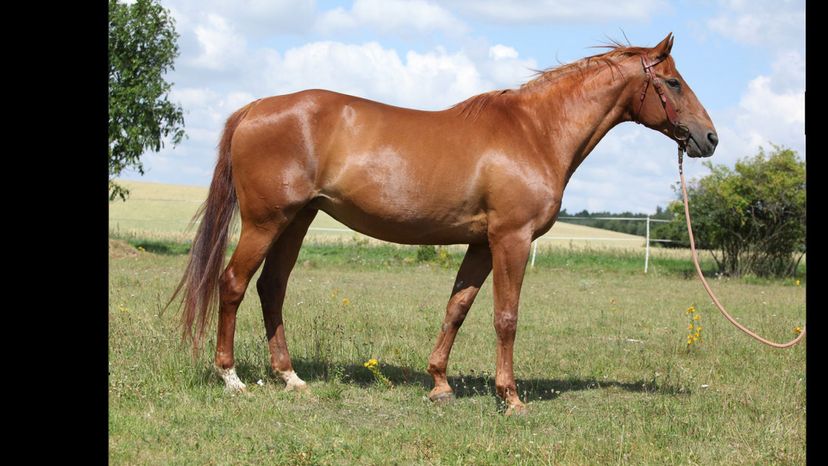
Shutterstock
Which horse breed is shown here?
Andalusian
Budyonny
A cross between the Russian Don and the Thoroughbred, the Budyonny breed was developed after the Russian Don breed suffered mass casualties in WWI and the Russian Revolution. These horses are noted for their abilities in jumping and dressage.
Trakehner
Exmoor
Advertisement
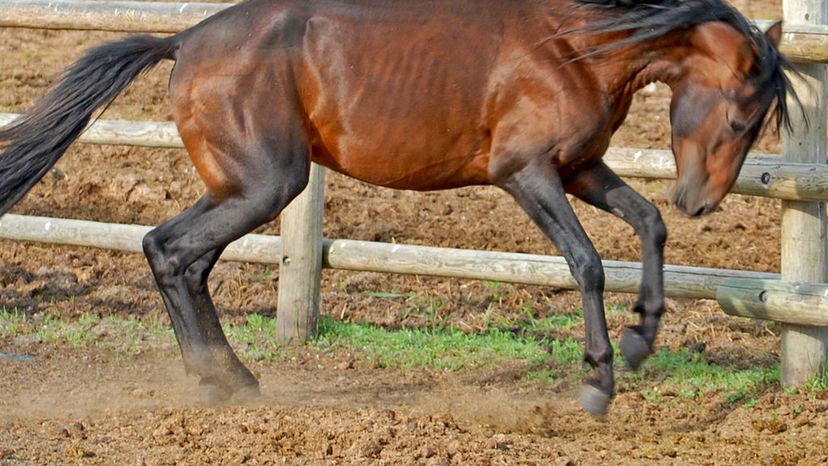
Wiki commons
Which horse breed is shown here?
Nokota
Oldenburg
Quarter Horse
Caspian
The Caspian is an ancient breed that faced near extinction in 1965. They're believed to be related to a small prehistoric horse native to the Persia area, but this connection has not been proven.
You Got:
/50
Shutterstock
